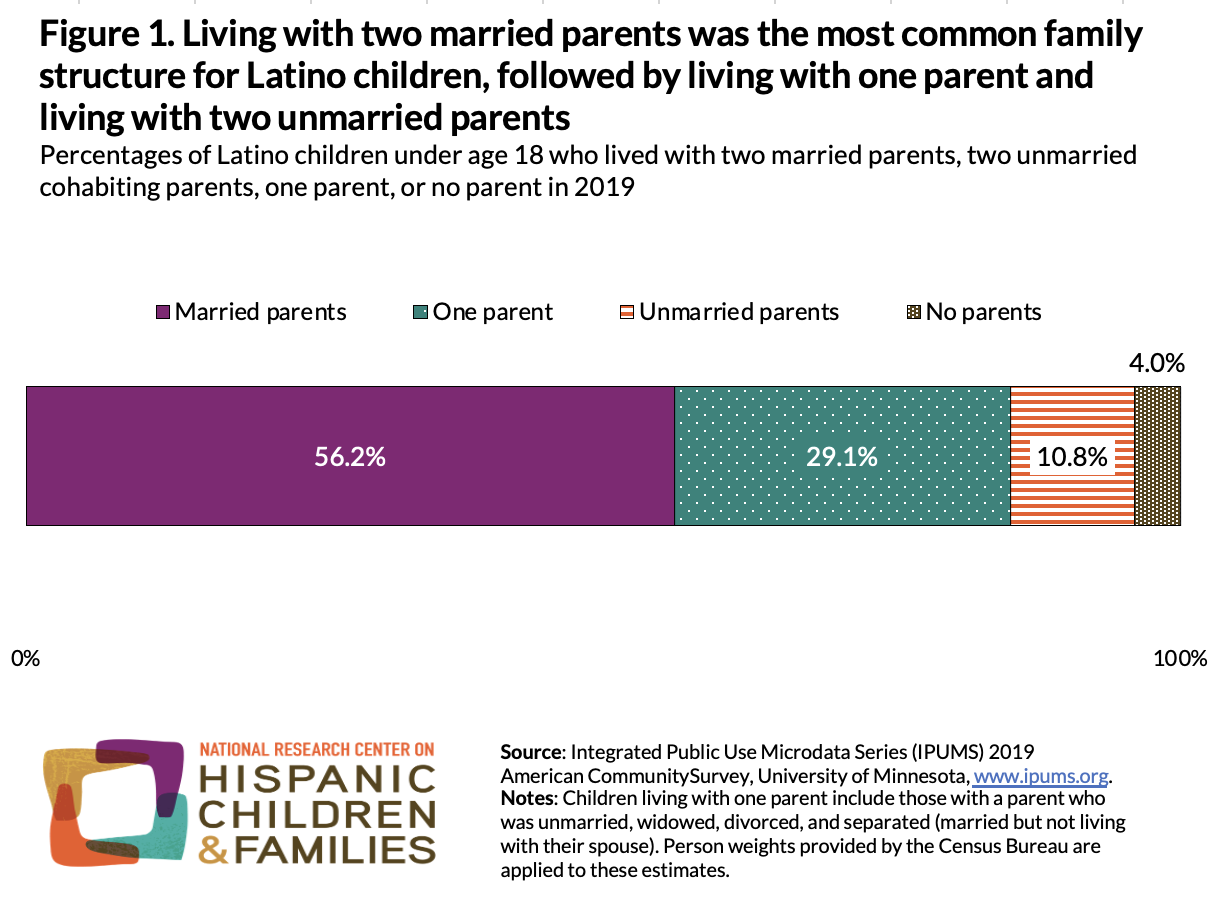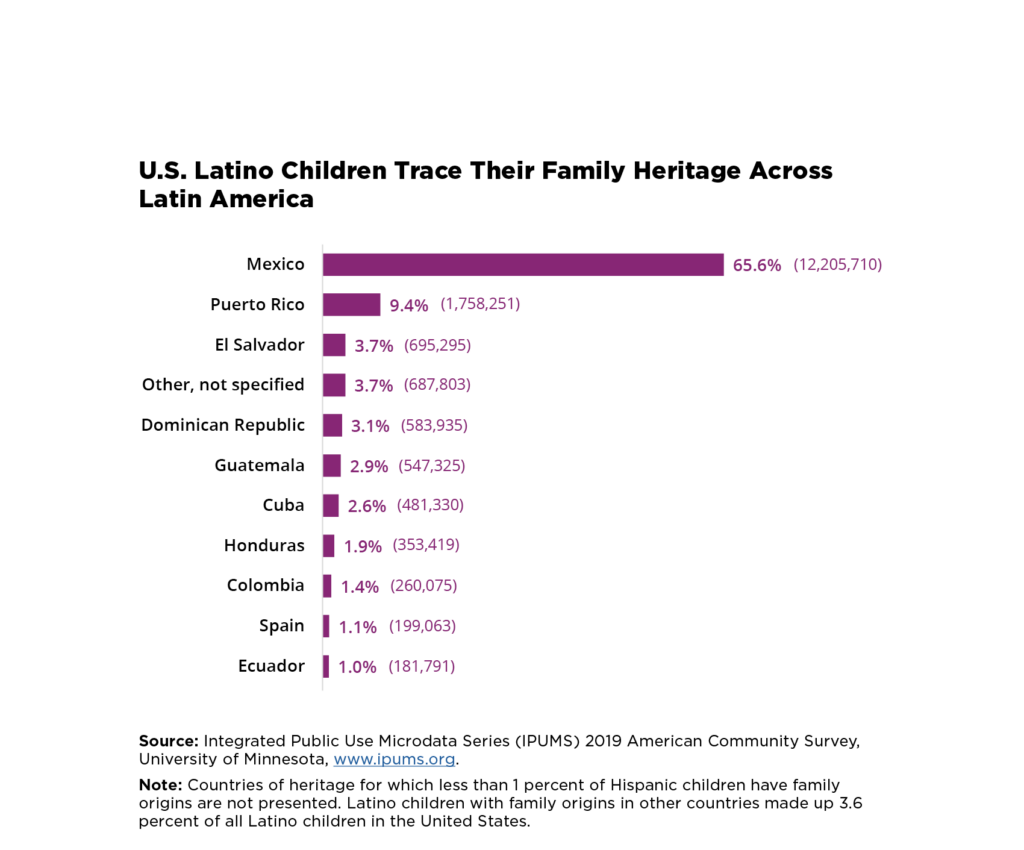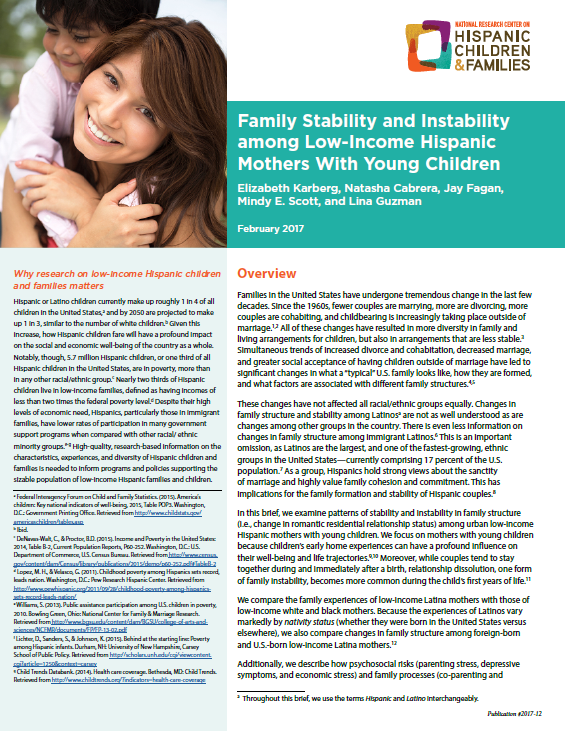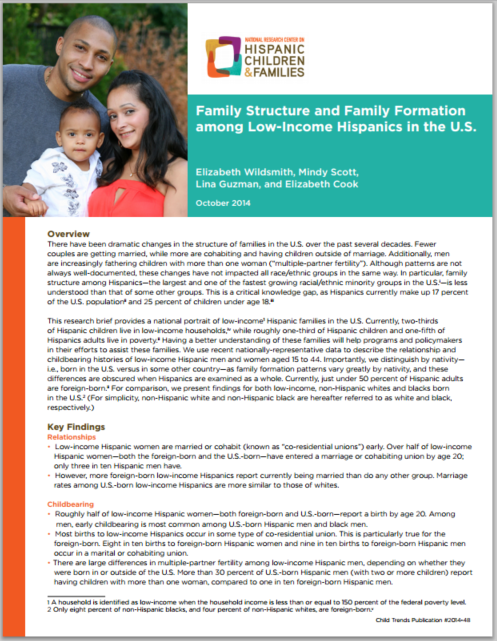Sep 29, 2022
Hispanic Family Facts
Latino Children Have Diverse Family Structures, But Most Live With Two Parents
Authors:
Latino children in the United States grow up in a diverse range of family structures. Our new analysis of the American Community Survey finds that, in 2019, the majority (56%) of Latino childrena lived with two married parents.b The remainder lived in families with a single parent (29%), with unmarried cohabiting parents (11%), or with no parents (4%). Overall, roughly two thirds of Latino children lived with two parents who were either married or cohabiting.
Family structures shape children’s access to economic resources and to the social and emotional support they need for healthy development. Family structure also affects Latino children’s well-being through its influences on parents’ health and well-being, parental relationships, and parenting and co-parenting practices.

It’s important for institutions serving Latino families to understand family structure among Latino children, who represent one of the largest and most diverse ethnic child groups in the United States. In 2019, there were 18.6 million U.S. Latino children, accounting for over one quarter of all children in the country. Latino children are the largest child ethnic minority in most U.S. states; in several southwestern states, Latino children represent half of all children. Latino children are also diverse in their countries of heritage: Close to two thirds can trace their heritage to Mexico, while the rest have family roots that extend across Latin America.
Footnotes
a We define Latino children as children under age 18 for whom a Latino, Hispanic, or Spanish origin (of any race) was reported.
b We consider only parents who lived in the same household, including biological, adoptive, and step-parents (most were the household’s reference person, the reference person’s spouse or domestic partner, and—in the case of a three-generation household—the reference person’s child or child-in-law), and other potential parents identified by IPUMS. See https://usa.ipums.org/usa-action/variables/POPRULE#description_section




